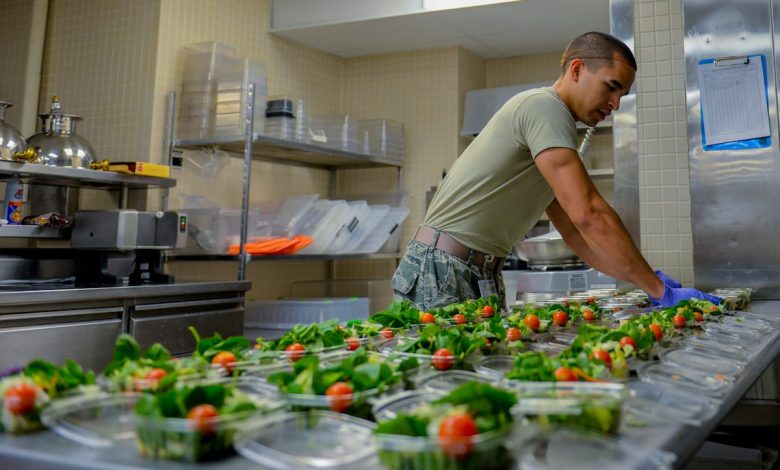DOD working on recipe to improve food on military bases

As healthy food gets more attention in national discussions, defense officials are looking at a coordinated attack on the problem of a lack of tasty, nutritious food on military installations.
Defense officials are in the beginning stages of putting together a DOD-wide plan to meet the nutritional needs of service members and their families, Glenn Garrison, the Defense Department’s director of Morale, Welfare, and Recreation and Resale Policy, said during a recent military food service webinar.
For now, the plan involves a DOD regulation providing consistent standards and a single office for oversight of policy and advocacy for food on installations, Garrison said. But the goal is to also develop a comprehensive “strategic food master plan” for each installation, he said, and to identify gaps in the food services available at installations.
Troops may not have ready access to food at their dining facility because of a variety of factors, such as long lines, distance from their unit and barracks, or the food is simply not tasty. Hours of operation are a common factor, as they don’t always accommodate training and work schedules. At 2 a.m., the only option for food at an installation may be a vending machine or delivery from off-base.
The usage rate of the dining facilities ranges from 20% to 50%, depending on the service branch, Garrison said.
“That’s not the intent of dining facilities. We want to make sure we get food to our military service members, and it’s got to be healthy and tasty,” he said during the webinar, organized by the American Logistics Association.
Meanwhile, money for meal benefits is being deducted from service members’ paychecks even when they’re not using the dining facilities, but buying food elsewhere. In effect, they’re paying twice for food, Garrison said.
“We have to increase the meal card utilization rate,” said Chuck Milam, a former DOD official who has worked on improving food on military bases for nearly two decades. “We can’t continue down the path of having 100 meal card holders at a dining facility that costs a couple million or three million dollars to operate.”
RELATED
It’s also a matter of cost and efficiency. A previous study showed that food costs in dining facilities are higher than most colleges and universities — about $25 to $40 per plate in military dining facilities, compared to about $7 per plate in colleges, Milam said.
Although DOD has tried to promote healthier eating through color-coded nutrition labeling in dining facilities, inconsistent implementation and oversight have hampered those efforts to encourage nutritious choices, Garrison said.
A critical pillar of the DOD instruction that’s in the works is ensuring reliable and resilient food security across all installations, Garrison said. This will guarantee that installations maintain consistent access to sufficient, safe and nutritious food “aligned with mission requirements.”
Installations’ food systems must be strong enough to withstand vulnerabilities such as supply chain disruptions and local resource limitations, he added. Officials should plan for long-term availability even in the event of a crisis.
One big challenge in bringing food improvements is that food policy comes from multiple offices within DOD and the services, Garrison said.
Having that central point of control over food on installations is “critically important,” Milam added. Today, there’s a “spaghetti chart of who’s in charge of food,” he said.
Acquisition and sustainment officials own the dining facilities. DOD personnel officials oversee health affairs, the commissaries and non-appropriated fund activities like clubs and restaurants, as well as the brand-name eateries like McDonald’s and Panera that operate on base through agreements with the military exchanges.
All told, food sold through non-appropriated fund entities makes up about 80% of the food on any given military installation, Garrison said.
The services have been working on a variety of initiatives to improve the food for service members and families, but not all initiatives work for all the services or every installation, Garrison said.
In addition to DOD regulations, to include an assessment of food on installations, Milam said, legislation is needed to ensure the improvements are codified and enduring, lasting beyond administrations that come and go.
“Our service men and women deserve better, healthier food,” Milam said.
“Young men and women in college shouldn’t have better food than our service men and women that we deploy to tough locations, and carry 80- to 90 pounds on their back in a wartime environment. We should have the very best food for them, not only in dining facilities, but outside of dining facilities as well.”
Karen has covered military families, quality of life and consumer issues for Military Times for more than 30 years, and is co-author of a chapter on media coverage of military families in the book “A Battle Plan for Supporting Military Families.” She previously worked for newspapers in Guam, Norfolk, Jacksonville, Fla., and Athens, Ga.
Read the full article here







